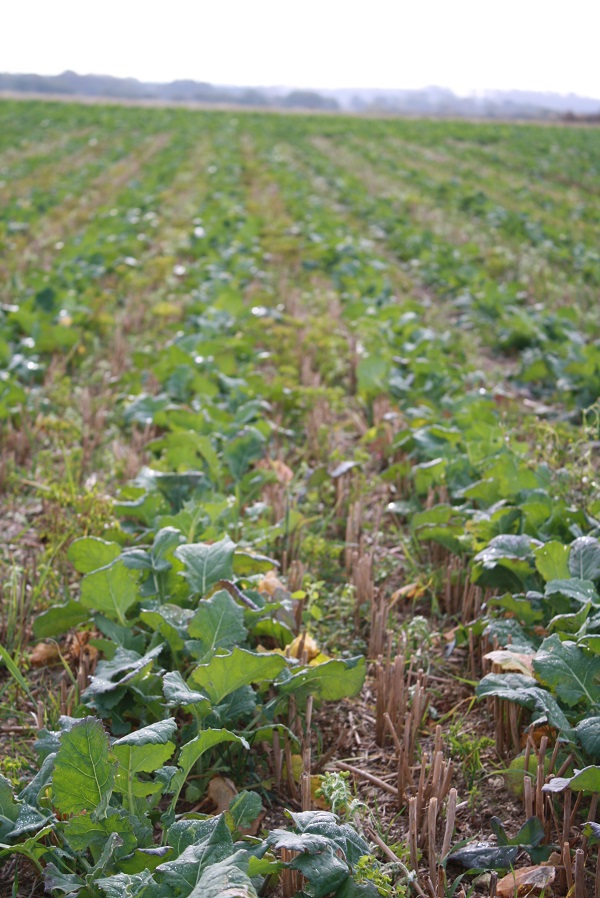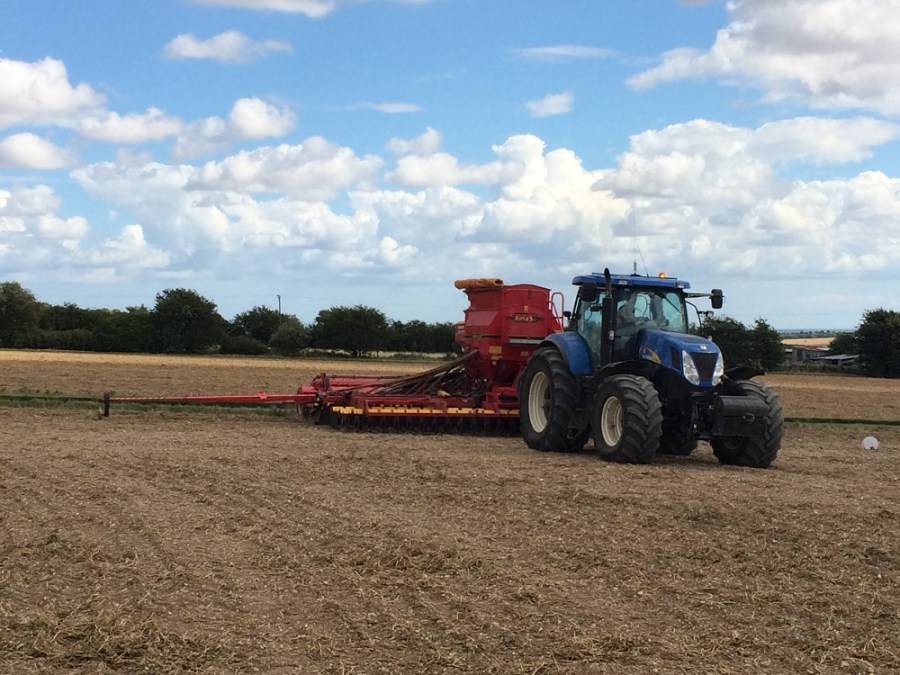Sowing a cover crop after harvest can be a great way of improving soil health and facilitating spring cropping, providing it’s carefully tailored to field requirements, crop rotation and other site-specific conditions. CPM finds out more
Cover crops can serve many functions.
By Paul Spackman
As the main period for establishing cover crops approaches, Farmacy agronomist Alice Cannon gives her advice to help pick your way through the multitude of cover-cropping options for this autumn. Based on several years of research on farms in Lincs, she highlights four important areas to focus on.

Large amounts of brassicas in a cover crop grown ahead of oilseed rape, could harbour diseases or pests specific to that crop.
Her first pointer is to be absolutely clear about the purpose of including a cover crop in the farm’s rotation. “Cover crops can serve many functions depending on the species and varieties chosen, so being clear about what you want to achieve is fundamental when deciding what to grow,” she says.
Alice highlights some of the most common reasons for growing a cover crop are to improve the soil structure, by breaking compaction and adding organic matter, and help manage soil moisture to facilitate drilling in the spring.
“Cover crops are also used to help build fertility, reduce nutrient leaching, prevent erosion (wind or water) and to provide forage for grazing livestock.
“No single cover crop species or mix of species will achieve all of these benefits, so prioritise the main aims for specific fields as this determines the species and varieties to grow, as well as the desiccation timing later in the season.”
For growers on heavy land that want to grow spring barley for blackgrass control, taller and more erect species, such a spring oats, may be their top choice, she suggests. These allow the soil surface to weather and dry land out over winter, as well as allowing blackgrass to flush before spring cropping.
In other situations, such as on light land prone to winter erosion or leaching, the aim may be to protect the soil surface, build organic matter and help retain moisture ahead of spring drilling. Here, soil-covering species such as radish and winter oats are more suited, she says.
Deciding how cover crops fit into the arable rotation has a big influence on mix selection, Alice says.
“Cover crops generally need to be established soon after harvest, in late August or early Sept, so time is needed to clear any preceding crop and prepare ground. Ideally major structural issues, such as compaction, should be rectified before sowing the cover crop and land destined for spring drilling should be prepared in a way that means little or no cultivation is needed in spring,” she says.
The impact on following crops is also particularly important, particularly with issues such as pest and disease carryover, volunteers and nutrient lock-up to consider, she adds.
“A high proportion of cereals in the cover crop, for example, could provide a ‘green bridge’ for aphids over winter or cause temporary nitrogen lock-up, reducing the amount available to the following crop – often spring barley. Equally, large amounts of brassicas or pulses in a cover crop grown ahead of oilseed rape, beans, or peas could harbour diseases or pests specific to those crops.”
Desiccation timing is crucial for soil water management as well as the carbon/nitrogen ratio. Alice suggests cereal cover crops, particularly those above 30% cereal preceding commercial cereal crops, should be sprayed off 4-6 weeks before spring cereal drilling to prevent nitrogen lock-up. Mowing or grazing these mixes would also prevent N lock-up.
Selecting the right species and varieties is key to reducing the risks mentioned above, she points out. Alice recommends using at least three or more different species in the cover crop mix. Where it precedes a cereal crop, the cereal proportion in the cover mix should not exceed 20%, she says.
“The choice of mix depends on the individual aims for the site, preceding/following crops, soil type, cost, and other site-specific conditions (e.g. machinery available). Having a varied mix of species spreads risk and helps deliver a variety of benefits offered by each element. Once the correct species have been chosen, it’s important to select the right variety within this.
“If you’re drilling early, you don’t want an early maturing variety as it will run to seed providing a woody stem and therefore a difficult biomass to ‘deal’ with in following crop establishment,” she adds.
In most cases, below-ground biomass (i.e. rooting) is just as, if not more important, than surface growth, she highlights.
“Species with dense fibrous roots like linseed, legumes and cereals, provide good soil conditioning and moisture extraction in upper layers, while those with strong tap roots, such as radish or brown mustard can be better for breaking compacted layers and extracting water from deeper in the profile.
“Frost hardiness is something to consider, as more ‘exotic’ species such as phacelia, sunflower, black oats and buckwheat will be killed by frost. This may help with biomass management when establishing the following spring crop, but these wouldn’t be suitable if you’re planning to graze the cover crops,” she explains.
“Using a proportion of farm-saved seed can be cost-effective, but it’s important to consider any impact on following crops of a similar species when doing so, for example when using home-saved oats in the mix ahead of spring barley.
“Often adding specific cover crop species to pre-existing farm seed available can make cover cropping effective as well as more economically viable,” she adds.
Lastly, the success of a cover crop comes down to establishing it well. “Although cover crops need to be sown soon after harvest, it’s best not to drill too early as this can encourage a flush of lush green top growth with minimal rooting and increase the risk of plants going to seed early,” explains Alice.
“The aim is for cover crops to develop more slowly to build root mass as well as top growth. Generally this means sowing around the last two weeks of August into the first week of Sept.”
Alice also says that while some species (e.g. mustard) establish reasonably well if just broadcast on to the surface and harrowed in, generally it’s better to treat cover crops as you would any other crop and drill them properly.
“Individual species have different requirements for drilling depth, for example phacelia, peas and vetch need to be drilled deeper than mustard,” she explains.
Another potential pitfall when growing cover crops is slugs, she advises, and there is a restriction applying to Ecological Focus Area (EFA) greening land that no pesticides can be used, which rules out using slug pellets. Consolidation after drilling will help reduce risk, she notes.
Cover crops in action
Farmacy is hosting a cover crop demonstration day on 5 September 2019 at Waddingworth, Bardney, Lincs. Contact Lisa Dean for more information lisa.dean@farmacy.plc.uk




